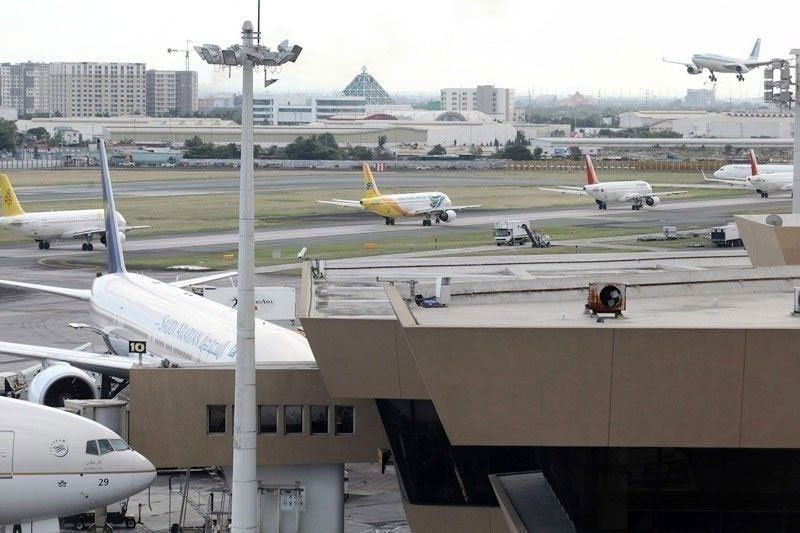Airport projects to be delayed due to COVID-19
By Richmond Mercurio

Aviation think tank CAPA-Centre for Aviation said that while much is made of the disastrous impact of the COVID-19 outbreak on the airline sector, the airports are suffering as well. STAR/File
MANILA, Philippines — Aside from battering airlines globally, the coronavirus disease 2019 or COVID-19 pandemic is seen having a major impact on airport projects, with some to face significant delays in construction, and some might even potentially lose their appeal to investors.
Aviation think tank CAPA-Centre for Aviation said that while much is made of the disastrous impact of the COVID-19 outbreak on the airline sector, the airports are suffering as well.
“While some airport development projects will continue because too much time and energy has already been invested to do otherwise, others will inevitably be delayed and possibly for years, rather than months. That is hardly an enticing prospect to a potential investor,” CAPA said.
“For some, perhaps many, airport investment is not going to look like the long term cash cow it was up until January of 2020,” it said.
CAPA said groups which invest in airports must reappraise their strategies as the “remorseless progress of the coronavirus globally is threatening the world’s air transport and tourism industries in 2020 and beyond.”
It said a company does not easily come back from disasters of this magnitude even if the mechanics and infrastructure of the industry remain in place.
“In most countries the majority of airports are still state-owned. In others, the private sector runs the show. Those private sector investors entered the business because it was perceived as a safe haven for pension funds, for example, with perhaps relatively low returns, but proven longevity,” it said.
“Now, the airports, like the airlines, will hit severe cash flow problems quickly, if they have not already,” CAPA said.
In the country, three major airport projects are in the pipeline. These are San Miguel Corp. (SMC)’s $15-billion Bulacan airport project, the Sangley International Airport project of the Cavite government and a private consortium composed of Lucio Tan’s MacroAsia Corp. and China Communications Construction Co. Ltd., and the P102-billion rehabilitation project of the Ninoy Aquino International Airport (NAIA) to be undertaken by a consortium of conglomerates.
The Bulacan airport project, also referred to as the New Manila International Airport, was supposed to break ground in December last year, but was postponed due to clarifications raised by the Department of Finance (DOF).
Last February, the Department of Transportation (DOTr) clarified that SMC could proceed anytime with the actual construction of the airport project amid the clarifications being sought by the DOF on certain provisions in the concession agreement.
The Bulacan airport project will be built on a 2,400-hectare property in Bulakan, Bulacan and will have four runways, eight taxiways and three terminals capable of handling up to 100 million passengers per year once fully completed in five years’ time.
Meanwhile, MacroAsia and its Chinese partner for the Sangley Point International Airport (SPIA) project early this month admitted that they continue to face difficulties in completing post qualification requirements given the situation in China brought about by the COVID-19 outbreak.
The consortium has been awarded by the provincial government of Cavite the $4-billion first phase of the SPIA, a project involving the development of an interim first runway with an annual design capacity for 25 million passengers and the new Sangley connector road and bridge.
As for the NAIA rehabilitation project, discussions between the government and the consortium of conglomerates on the pending issues involving the project were supposed to be finalized this month, but the meetings were postponed after Metro Manila was placed under community quarantine last March 15.
Metro Pacific Investments Corp., one of the seven conglomerates comprising the so-called NAIA Consortium, has decided to pull out from the group, leaving Aboitiz InfraCapital, AC Infrastructure Holdings Corp., Alliance Global Group Inc., Asia’s Emerging Dragon Corp., Filinvest Development Corp., and JG Summit Holdings Inc. as the remaining members.
Through the rehabilitation project, the consortium seeks to help alleviate the worsening air traffic congestion at the NAIA and solve its capacity constraint by undertaking various developments in three phases from 2021 to 2024.
Aside from the three major airport projects, development of various regional airports across the country has also caught the eye of a number of big Philippine companies.
The DOTr has received numerous unsolicited proposals from the private sector for the expansion, operations, and maintenance of regional airports such as the Bohol-Panglao International Airport, Bicol International Airport and Laguindingan Airport (Aboitiz InfraCapital), the Puerto Princesa Airport and Iloilo International Airport (Prime Asset Ventures Inc. of the Villar group), Bacolod-Silay Airport and the Busuanga Airport in Palawan (Udenna Infrastructure Corp.), Davao International Airport (Chelsea Logistics Holdings Corp.), Kalibo International Airport (Mega7 Construction Corp.), and Siargao Airport in Surigao del Norte (Philippine Airport Ground Support Solutions Inc.).
Transportation Secretary Arthur Tugade last week directed all concerned offices under his agency, particularly the legal affairs and planning department, to continue coordination and review of relevant documents of unsolicited proposals submitted to the DOTr.
“This quarantine does not mean all pending tasks must also stop. Rather, take this opportunity to finish all pending assignments and tasks,” he said.
Source: The Philippine Star
